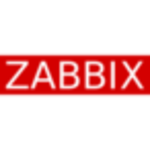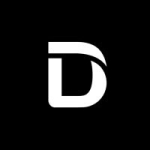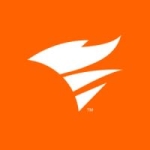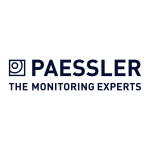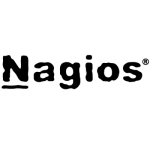What is our primary use case?
I use Auvik Network Management (ANM) when I go in to do a discovery for an environment.
We are a technology partner with Auvik Network Management (ANM), so we use Auvik Network Management (ANM) and implement it for certain customers.
How has it helped my organization?
I use a number of tools. One is Network Detective, which does an actual scan of the network from a server perspective, users, etc. It doesn't do a very good job on the network gear, whereas Auvik Network Management (ANM) does an incredible job of inventorying, port-to-port management of anything that's in that environment from a network perspective. All six layers are covered under Auvik Network Management (ANM). It has become a pretty interesting tool for monitoring network traffic and network equipment.
I have it now integrated with Halo, so if something blips on the network, it triggers an alert into Halo to have that looked at. I've been able to get the integration with Halo done; I called them, and they had it done two weeks later, fully integrated. Auvik Network Management (ANM) is there to protect your infrastructure network. It gives you three-dimensional drawings that are dynamic; when you change the cable from one port to another, it actually shows up on the drawing on the screen. Many companies are using Auvik Network Management (ANM) to monitor their network, using SentinelOne for the endpoint management, and if they're manufacturing, they might be looking at SAP or Odoo. I'm just learning Odoo right now. We're looking at the same as why we're replacing ServiceNow with Halo; we're looking at replacing SAP with Odoo for organizations that just can't afford to keep up.
I've not used the automated documentation capabilities of Auvik Network Management (ANM). I don't pull the reports per se because I feed everything back to Halo. Auvik Network Management (ANM) would be primarily used by an MSP, and they'd be using that for their clients and then billing the client so much per endpoint. I use it because I want to get a really good visual of the network. Almost every single investigation that I do, assessment, I use three or four different tools, including Auvik Network Management (ANM). Network visibility is obviously important to me because I need to know what the age of the firewall is, the switches, are they underpowered, are they under warranty, and is there a support contract in place. Because if you have a firewall that's not being patched regularly, then you've got a huge security risk.
The real-time performance insight is crucial, and Auvik Network Management (ANM) has significantly contributed to this by monitoring every single port on every single device. If someone attempts to hack into the network, they will likely target the firewall. The system will detect such attempts and send an alert. This allows you to shut down that specific port or access point. Additionally, it identifies open ports in the firewall that shouldn’t be accessible. I create a risk register report that consolidates information from various tools into a one-page summary. For example, if there is an attempt to breach the firewall from a location like Russia, it gets marked as a risk. I can then manage a ticket for it in Halo, and possibly make adjustments in Central. I also ensure that the workstation has the appropriate endpoint protection. Furthermore, I can compile a dashboard displaying all the tools on a single screen. Overall, I have found the support team to be very helpful, and they are based in Waterloo, Ontario.
What is most valuable?
Auvik Network Management (ANM) provides an extremely intuitive interface that supports ease of use. There is no learning curve per se. The only difficulty might be getting the actual agents on the hardware, but it out of the box will do configuration backup of a firewall, which is a really useful function. I've been following that company since there was a guy in Ottawa who sold his company to Cisco for 500 million, and he started Auvik Network Management (ANM).
Auvik Network Management (ANM) provides a network map along with its dashboard that gives me a real-time picture of my network. We know all the drivers need to be installed, what firmware needs to be running, what the traffic is, what the CPU usage is, and the firewall. The way that I've got it mapped out is if Auvik Network Management (ANM) detects that a piece of critical equipment is getting too much utilization, then it will trigger an alert. It's also great for network visibility, knowing what the age of the firewall is, the switches, if they are underpowered, under warranty, and if there's a support contract in place. Network traffic monitoring, three-dimensional drawings, real-time performance insights, and port-to-port management are particularly valuable.
What needs improvement?
The network map and dashboard of Auvik Network Management (ANM) are a little bit tricky at the beginning, so people aren't trying to just steal a copy. There are some tokens that have to go back and forth, and that's just so that you can't scan somebody's network easily. You have to have credentials to the firewall in order to properly manage it. Once it's done though, it's a breeze, with a very nice interface.
For how long have I used the solution?
I've dealt with this product since it first came out, approximately 10 years ago.
How are customer service and support?
I've primarily interacted with my sales representative, so I've never really needed to call tech support. They do offer a "white glove" service for new customers, where consultants help with full implementation, but I haven't had the need to contact tech support much.
Overall, I have good impressions of their service. The quality of customer support is a key reason I choose to use these tools. I only work with companies that provide excellent tech support and phone support. For instance, I recently started using another product called RoboShadow, which doesn't offer a phone number but allows me to reach them through Microsoft Teams anytime, and I'm okay with that.
How would you rate customer service and support?
What's my experience with pricing, setup cost, and licensing?
Auvik Network Management (ANM) pricing or licensing is about 2,500 per year for approximately 4,000 endpoints, which is quite reasonable.
Which other solutions did I evaluate?
I constantly analyze and monitor the market for the best tools available. I don't add anything to my toolset unless I've identified it as the best option. There might be some overlap among products, but Auvik doesn't perform the same functions as SentinelOne, and SentinelOne doesn't do what Halo does, nor does Halo replicate what Microsoft offers. Combining all that data into one logical report is critical for me. For example, one significant difference between SentinelOne and Microsoft is that Microsoft will never analyze the network or look for threats from devices that don’t have Microsoft software installed. That’s a considerable gap. On the other hand, SentinelOne can be installed on various devices, including Internet of Things (IoT) devices, which is an advantage. You could have a workstation in a remote location, like a construction site, that isn't connected to the internet, yet it's still protected. The SentinelOne agent runs in memory, continuously monitoring for malicious software installations based on the last policies applied, even without an internet connection. In contrast, Microsoft's products require a connection to their backend to function properly, meaning that Microsoft Defender won't be effective without that connection.
Additionally, SentinelOne can be installed on various platforms, including Linux, MacOS, and Android, and it even supports versions going back to Windows 7. This means you can still manage and protect devices in older environments effectively. SentinelOne does a great job of patch management, notifying you when software, like Google products, needs to be upgraded due to a lack of security support.
Auvik takes a different approach, allowing you to generate reports on every single device. It can indicate when the firmware needs upgrading and offers backup functionalities, such as saving the configuration of a firewall within the Auvik tool, which is something other tools may not provide. In summary, Auvik should be compared more to products like ConnectWise, Kaseya, and NinjaRMM, which focus on patch management and device reporting
What other advice do I have?
Once you have it installed on your laptop, you simply run the application, which will bring you into a new environment. If needed, you can obtain the credentials for their firewalls and similar components. The scan will initiate, and the dashboard will begin to display information.
Managed Service Providers (MSPs) would use the application differently. They would deploy the Auvik collector, which remains on their customers' computers, creating a multi-tenant environment. I’m not an MSP anymore, but I’ve noticed that many MSPs are transitioning from products like ConnectWise to alternatives such as Auvik, SentinelOne, and Halo. In fact, I will begin training next week with a company that is currently implementing Halo as part of their PSA (Professional Services Automation) offering for managed services.
I would rate Auvik Network Management (ANM) a perfect 10 out of 10.
Disclosure: My company does not have a business relationship with this vendor other than being a customer.






